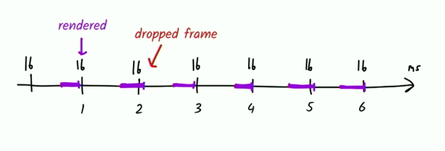React Conf '18 - I'm Hooked
28 Oct 2018
I am flying home from React Conf 2018, hosted at the Westin Hotel in Lake Las Vegas. Some of the key takeaways of this year’s conference:
Hooks are coming
The conference started out strong with Dan Abramov demonstrating new React hooks to the crowd. I heard many, many audible gasps from the crowd as Dan walked us through using hooks to replace traditional React classes. I had the feeling that I was watching a new version of React being demoed right before our eyes. Although the API is unstable and experimental at this point (it’s just an RFC right now), it is immediately clear that this is the future of React. I am very grateful I was there to hear the announcement in person.
So, what are hooks going to do for you? Well, first of all, you’re going to be writing a lot less boilerplate class code. React 16.7 (alpha) allows us to use functions rather than classes as our components.
State management will be handled by React’s useState (docs) function - I will say that I felt a little strange about the ergonomics of useState (you have to call it sequentially, ordering matters). I think that for complex components that require lots of state updates, I would still write traditional classes. This useState pattern seems best suited for simpler components that only hold a couple values in state.
Instead of manually tracking side effects of components using componentDidMount and componentWillUnmount we can use (no pun intended) the new useEffect (docs) functions that React provides in 16.7 Alpha. This is probably the most promising feature I saw from Dan Abramov’s presentation.
Rather than segmenting application logic throughout these various lifecycle components:
componentDidMount(){
// Do something here because we mounted our component
add_event_listener('foo_event')
}
componentWillUnmount() {
// Make sure we unload whatever we did when we mounted!
remove_event_listener('foo_event')
}We will now be able to import the useEffect function and use it like this:
export default function () {
useEffect(() => {
// Do a thing here.. maybe add an event listener
add_event_listener('foo_event')
// If we want the event listener to be removed when our component is unmounted
// We just need to return an anonymous function containing the actions we want performed
return () => {
remove_event_listener('foo_event')
}
)
}That’s really it. It may seem a bit magical (it certainly feels like it), but React will now perform the same duties that it used to, but with all of the logic nicely grouped together! This makes writing and debugging side effects much easier.
One more big change.
One of the worst parts of React was dealing with boilerplate code, particularly when it comes to shouldComponentUpdate. shouldComponentUpdate is rarely used for much more than checking if the prevProps != nextProps based on some criteria.
This is some very typical shouldComponentUpdate boilerplate that I’m sure you’re familiar with:
shouldComponentUpdate(nextProps) {
if (this.props.id !== nextProps.id) {
return true
}
return false
}We are just checking if the incoming props have a different id than the props we already have. This is a fairly standard check for a lot of React components. What if React could just diff our props for us, and only update when necessary?
// Example taken from https://reactjs.org/docs/hooks-reference.html#conditionally-firing-an-effect
useEffect(
() => {
const subscription = props.source.subscribe();
return () => {
subscription.unsubscribe();
};
},
[props.source], // Only run if the props.source values changes
);Did I mention that when you use function components, there is no more binding to this? That alone is a compelling reason to begin exploring using React Hooks.
React Native isn’t there… yet
I really enjoyed James Long’s talk “Go Ahead, Block the Main Thread”, where he argued against a lot of common wisdom regarding Javascript. James talked about the viral impact of async functions - once a single function is async, everything in the codebase eventually follows suit. That’s never personally been a problem for me (I greatly enjoy using the asynchronous features of JS).
James argued that the asynchronous nature of React Native’s interaction with native API’s was harming UX. He showed some compelling examples of janky scrolling behavior that occurs when the React Native asynchronous processes fall behind the screen render.
His solution: Block the main thread. Don’t let other tasks interrupt crucial animation rendering. What’s the best way to do that? Get rid of async, and allow synchronous flow between native API’s and React Native.
GraphQL is in vogue
Speaking of talks I enjoyed, I greatly enjoyed Conor Hasting’s talk about GraphQL.
In a typical REST API setup, a consumer requests data from an endpoint. The consumer has little to no control over what is delivered to them. To use Conor’s analogy, it’s like calling a pizza parlor for pizza delivery, and since they don’t know what toppings you like, they put 40 different toppings on the pizza, deliver it to your house, and tell you to pick off the ingredients you don’t like.
When you’re working on a front-end application and constantly consuming API’s for varying amounts of data, this can get exhausting. Want to get only the id and timestamp of a given set of rows? Too f’ing bad. Now your front-end application is stuck having to munge, filter, and extract data, even though we know exactly what we want. It’s like calling the pizza parlor, asking for pepperoni, and getting 40 toppings.
GraphQL seeks to enforce the concept of getting only what you need, when you need it. This concept is not limited to any sort of technology stack or implementation - it is simply (in my eyes) a philosophy of API design. With GraphQL, your frontend can intelligently query the API for only the data it wants.
This saves time in two huge ways:
- Less data over the wire. Your API is no longer attempting to cram unnecessary information into a response.
- Less processing/filtering by the front-end. Your front-end doesn’t really need to know or care about how the API works. It just wants some data.
Good Captioning
As someone who has a hard time hearing, I really, really appreciated the real-time captions provided by the conference. They were incredibly precise, accurate, and they made my conference experience a lot better. I am used to only hearing 50-60% of a speaker’s talk, and I really loved being able to look to the caption monitors and follow along.
Related Posts
Helpful Bash Script - git reset all
22 Sep 2021Get a Pull Request by Number - Bash Function
22 Sep 2021Creating Effective Presentations with stock Apple applications
21 Sep 2021Air Cooling a Buttkicker Gamer 2
27 Feb 2021



